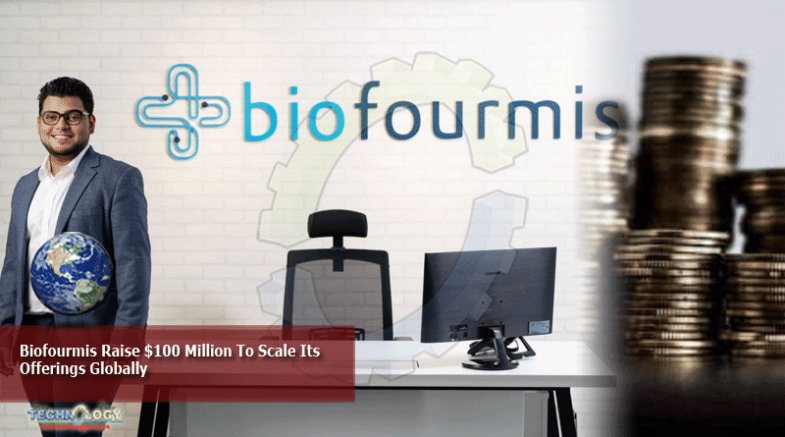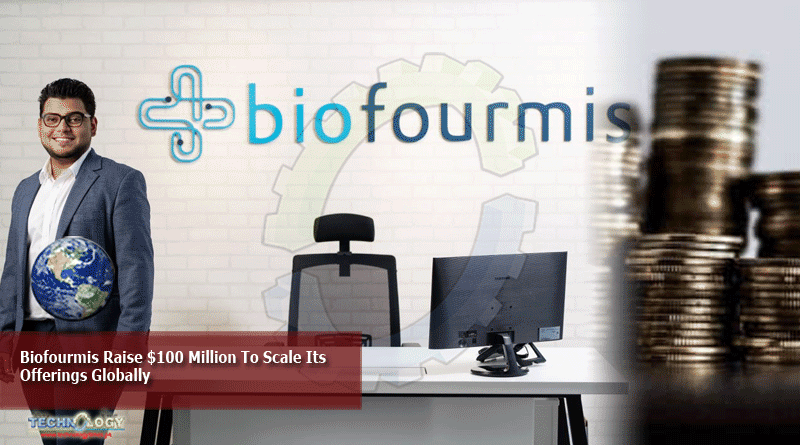Biofourmis, A Digital Therapeutics Startup That Employs Wearable Devices And Data Analytics To Help Treat Patients,

Has raised $100 million to scale its offerings globally and develop new products that further blur the lines that once clearly separated drugs from medical devices.
The new capital, a Series C round of funding, was led by SoftBank, a Japanese conglomerate whose investments include companies working in digital technology and healthcare.
Biofourmis’s flagship technology, BiovitalsHF, is prescription software designed to detect the early signs of heart failure. The FDA-cleared product includes a sensor worn on the arm and a companion mobile app that together measure up to 20 medical parameters for the condition—collecting nearly 10 million data points per day, Biofourmis CEO Kuldeep Singh Rajput (pictured above) tells Xconomy. The company’s software analyzes the data to predict heart failure events, then makes recommendations to a physician to either increase or decrease a patient’s medication.
“Clinicians are used to providing clinical care and using clinical data to make an intervention,” Rajput says. “Clinicians want clinical data that they can take action on.”
The customers for BioVitals are are pharmaceutical companies and health systems. Rajput says his company’s software improves patient care and reduces healthcare costs by avoiding emergency room visits or hospitalizations.
Bioformis was founded in Singapore in 2015 and relocated to Boston last year. Prior to Thursday’s funding announcement, the company last funding round was in May 2019 when it closed a $35 million Series B financing. Biofourmis used the cash to support commercialization of its technology. The company also turned to dealmaking to supplement its portfolio and expand the reach of its technologies. Last November, Biofourmis acquired Biovotion, a Switzerland-based developer of wearable biosensor technology. Soon after, the company announced a collaboration with Novartis (NYSE: NVS) in which patients discharged from a hospital and prescribed the pharma giant’s blockbuster heart drug sacubitril/valsartan (Entresto) would also receive Biovitals.
In March, Biofourmis expanded into cancer with the acquisition of Gaido Health, a digital therapeutics subsidiary of Takeda Pharmaceutical (NYSE: TAK). Gaido’s artificial intelligence-based technology monitors cancer patients to detect early signs of complications in discharged patients. Those indications can be used to support earlier clinical intervention. The startup is also exploring applications of digital technology in pain management. In July, the company announced a partnership with Roche subsidiary Chugai Pharmaceutical. The alliance is developing developing a digital technology for women who have endometriosis, a condition in which tissue that normally lines the uterus also grows outside of that organ, causing pain.
With the new financing, Biofourmis is realigning its operations and splitting into two division. Biofourmis Health will continue the remote patient monitoring offerings provided through Biovitals, supporting those who are managing heart failure, coronary artery disease, respiratory conditions, and cancer. The second division, Biofourmis Therapeutics, aims to bring the company into the new frontier of digital therapies. Some of those technologies will work alongside traditional pharmaceuticals and others are intended to be standalone therapies reviewed and regulated just like a drug.
The lead Biofourmis digital therapeutic candidate builds on the startup’s earlier work addressing heart failure. Rajput says it will include a sensor that captures physiological data that are then sent to the cloud for analysis. The software will automatically optimize the dose of a therapeutic and send that information directly to a patient—without intervention from a physician. In clinical testing in about 1,000 patients so far, Rajput says that the technology has produced “some fantastic preliminary data.” He expects the technology will be ready for an FDA submission in the first half of next year.
When Biofourmis does submit its heart failure technology to the FDA, it will blaze a new regulatory path. Rajput says the product candidate will be filed with the agency’s Center for Drug Evaluation and Research, the division that reviews experimental drugs. While there will be some oversight by the Center for Devices and Radiological Health, the medical devices division, Rajput says the digital technology will be reviewed as a drug.
“We would be the first one and we are working very closely with the FDA on that,” Rajput says. “It’s a new drug application, and a de novo submission for a device.”
Biofourmis has made headway commercializing Biovitals. Without disclosing specific financial figures, Rajput says his company’s sales in the first half of 2020 were nearly 10 times higher compared to the same period in 2019. That steady progress put Biofourmis on track to raise another round of funding. Rajput says he initially had a more modest figure in mind, but a meeting in May with SoftBank CEO Masayoshi Son persuaded him to aim higher. According to Rajput, Son said he saw the potential for the company break into new markets, such as Japan and China, while also continuing to grow in the US. Those discussions led to the $100 million investment announced Thursday.
SoftBank’s Vision Fund 2 led the new financing. Earlier investors EDBI, MassMutual Ventures, Openspace Ventures, and Sequoia Capital also participated. Rajput says the capital will help his company accelerate the growth of its Biofourmis Health division. The cash infusion will also finance clinical development of and regulatory submissions for other digital therapeutics from the company’s pipeline. Rajput says the capital will support the company’s plans for the next two to three years. After that, when the company has greater global scale, he says the company may consider an initial public offering.
This news was originally published at xconomy.com
